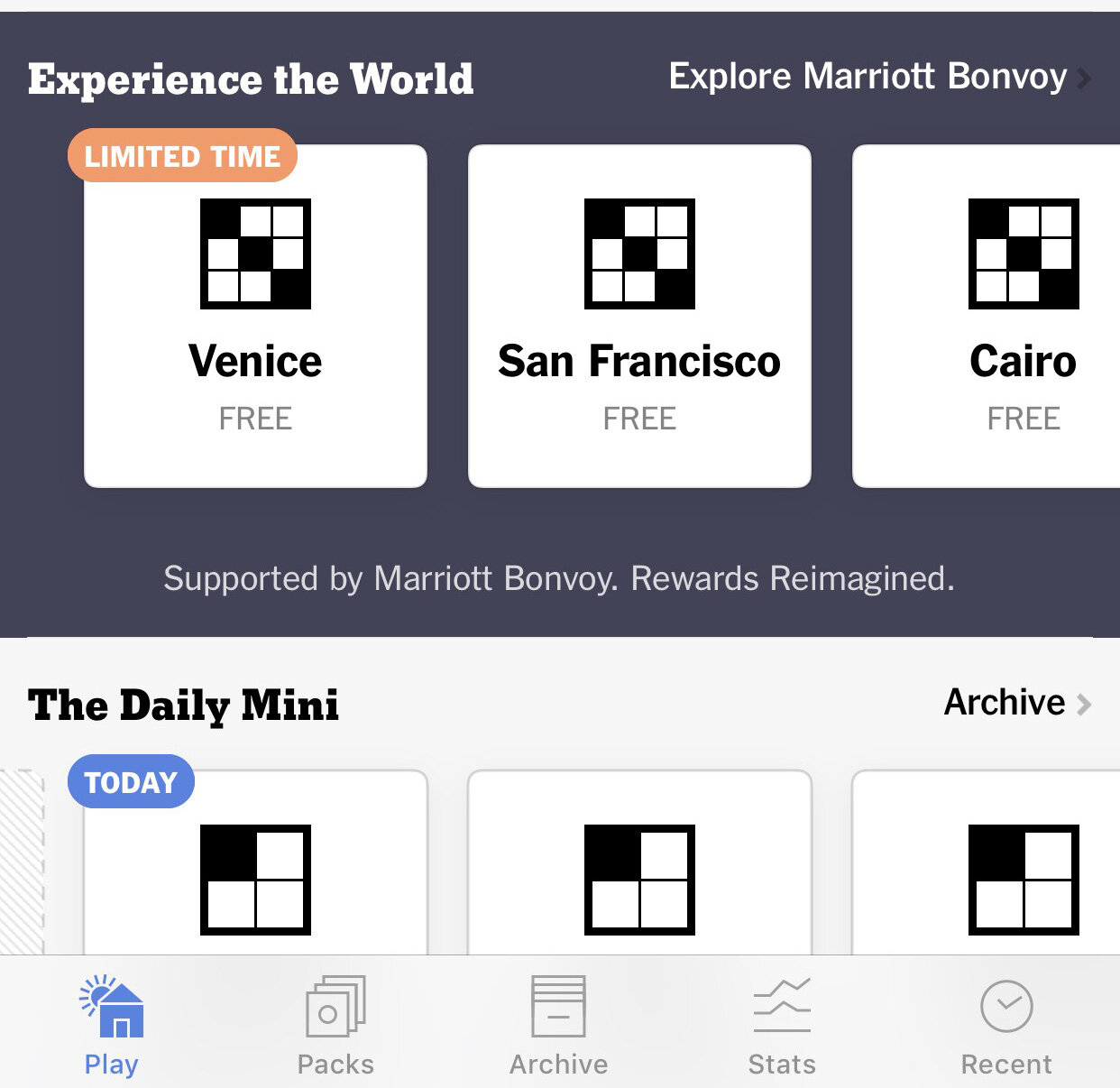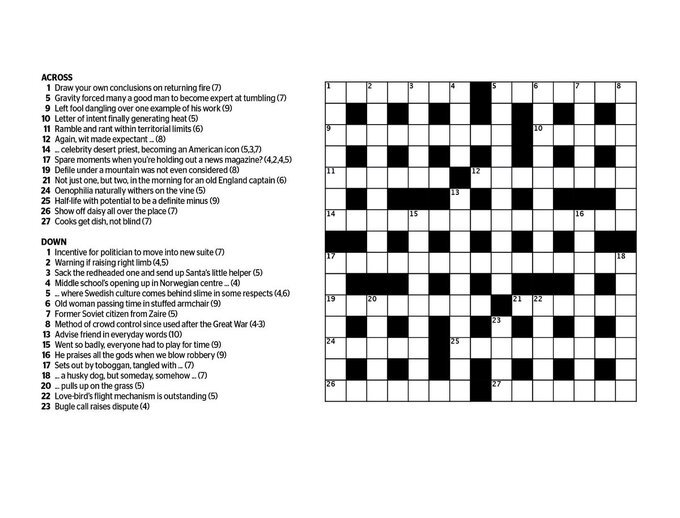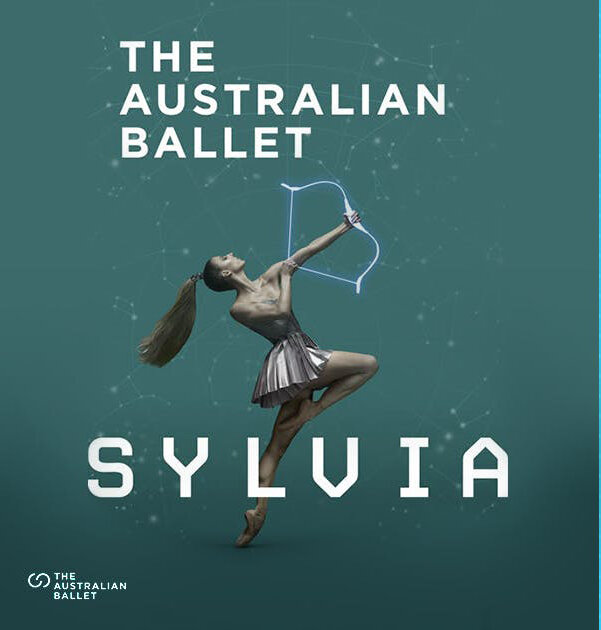If you can hold your own at the well-known party game Charades, you probably have good cryptic crossword aptitude. Imagine you had to act out a clue for the movie Top Gun.
First word: *points at woollen jumper* = TOP
Second word: *makes shooting gesture* = GUN
“Charade” cryptic clues work in basically the same way. For example:
Jumper and shooter in action movie (3,3)
Action movie is the definition
Jumper and shooter is the wordplay (charade)
Homophones
Another wordplay device commonly used in cryptics is the homophone - a word that sounds exactly like another word, but with different spelling. For example: calmer, karma; steal, steel; Rex, wrecks.
So, again, if we were playing Charades, and you wanted to act out the classic horror movie Saw, you might gesture to your ear (meaning “sounds like”) and then act out being in pain or “sore”.
We could translate this riddle into cryptic clue form:
Horror movie sounds painful (3)
Horror movie is the definition
Sounds painful is the wordplay
Sounds is used here as an indicator which hints that there is homophonic wordplay being used. There are many words that can act as homophone indicators - depending on how inventive or cruel the compiler is. Some common ones are: heard, listened, eavesdropped, broadcast, reportedly, said, outspoken. See the pattern?
Containers
Most seasoned cryptic solvers will look at the following clue and immediately guess that it is a container clue, because the word “holds” is a very common indicator for that type of wordplay.
Coach holds on for more money (5)
The answer is BONUS!
Coach holds on is the wordplay
more money is the definition
Coach = BUS, and it holds ON.
BONUS
Notice how the clue makes it seem like the clue is about a sports coach? We call this trick "misdirection" and crossword compilers revel in throwing these red herrings to poor old solvers.
So, now you now a little bit about the basic structure of a cryptic clue. This next section is an introduction to possibly the most alienating but important element of mastering cryptic crosswords…..
Abbreviations/symbols
Let’s look at an alternative clue for BONUS.
More money for bishop duty (5)
This is a simple charade clue: bishop = B and duty = ONUS.
Bishop = B? Yep, this is one of thousands of abbreviations or symbols that might pop up in a crossword. Usually they have some logical reasoning behind them. For example, b is a common abbreviation for Bishop in the world of chess.
However, sometimes these abbreviations have obscure or archaic origins, and cryptic crossword solvers just have to suck it up and accept their presence.
You might also find that B could be represented by: beta (Greek alphabet), bachelor (university), bee (the insect), black (chess again), bowled (cricket), bravo (phonetic alphabet).
If you don’t know much about cricket you might be at a slight disadvantage.
Another common trick to represent the letter B might be “Urban centre”, “top bunk”, “first base”. Likewise, “second base” could be A, “third base” could be S and so on.
Some of my most hated common abbreviations are Model = T (as in Model-T Ford), Sailor = ab (short for able seaman), son = s, daughter = d, and many more.
The reason I dislike these is because they aren’t really in common usage and tend to make new solvers befuddled and ask “why?”.
Of course, it’s very subjective. All compilers bring different sorts of knowledge to the table. But if you persevere you will come to know the puzzle setter’s quirks and ideosyncracies.
We’ve only scratched the surface in this article, but you should be better equipped to have a go next time you encounter a cryptic.














